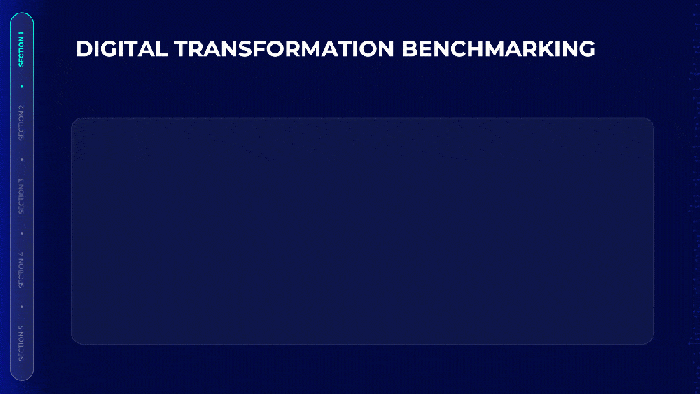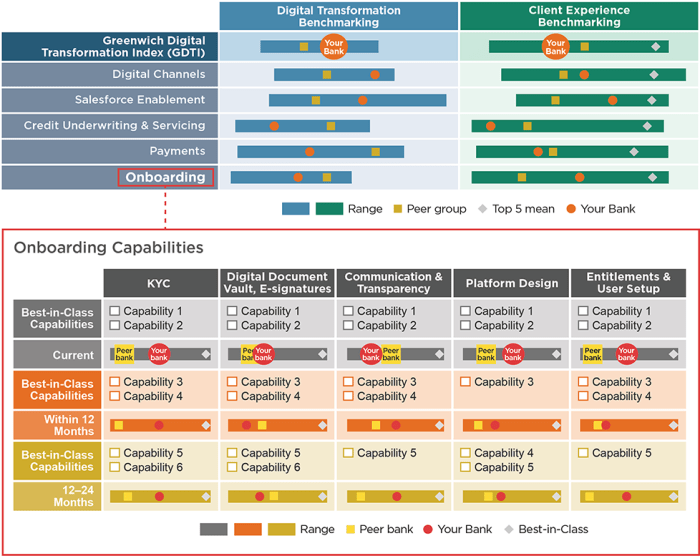
Embark on a journey into the realm of digital transformation with the powerful tools of benchmarking, as we explore how organizations can leverage these tools to revolutionize their operations and stay ahead in the digital age.
Delve deeper into the world of benchmarking tools and discover the key features, types, and implementation strategies that can drive business growth and innovation.
Introduction to Digilife Digital Transformation Benchmarking Tools
Digital transformation in businesses refers to the process of integrating digital technologies into all aspects of a business to fundamentally change how it operates and delivers value to customers. This transformation is essential for organizations to stay competitive in today’s fast-paced digital world.Benchmarking, on the other hand, involves comparing the performance of a business process or activity against best practices or industry standards.
It helps organizations identify areas for improvement, set goals, and measure progress towards achieving digital transformation objectives.
Importance of Benchmarking in Digital Transformation
Benchmarking is crucial in digital transformation as it allows organizations to:
- Identify strengths and weaknesses in their digital strategies
- Set realistic and achievable goals for digital transformation initiatives
- Measure progress and track performance against industry benchmarks
- Gain insights into best practices and innovative approaches used by industry leaders
How Benchmarking Tools Support Digital Transformation
Benchmarking tools provide organizations with:
- Automated data collection and analysis for accurate performance comparison
- Real-time insights and data visualization for informed decision-making
- Customizable benchmarks and key performance indicators (KPIs) for tailored assessments
- Collaboration and benchmarking capabilities with industry peers for shared learning
Types of Digilife Digital Transformation Benchmarking Tools

Benchmarking tools used in digital transformation are categorized into two main types: cloud-based solutions and on-premises solutions. Each type has its own set of advantages and considerations that companies need to take into account when selecting the most suitable tool for their digital transformation journey.
Cloud-based Benchmarking Tools
Cloud-based benchmarking tools are hosted on remote servers and accessed through the internet. These tools offer scalability, flexibility, and cost-effectiveness, as companies can pay for the resources they use. Examples of popular cloud-based benchmarking tools include:
- Amazon Web Services (AWS) CloudWatch: Provides monitoring and observability for applications and infrastructure on AWS.
- Google Cloud Platform (GCP) Stackdriver: Offers monitoring, logging, and diagnostics for applications on Google Cloud.
On-premises Benchmarking Tools
On-premises benchmarking tools are installed and run on the company’s own servers and infrastructure. While they provide more control over data and security, they require upfront investment and maintenance costs. Examples of on-premises benchmarking tools used for digital transformation include:
- New Relic: Offers application performance monitoring and infrastructure monitoring for on-premises environments.
- Dynatrace: Provides AI-powered observability solutions for on-premises and hybrid cloud environments.
Features and Capabilities of Benchmarking Tools
Benchmarking tools offer a range of features to assess digital transformation initiatives effectively. These tools play a crucial role in analyzing data to provide valuable insights for improvement. Let’s explore some key features and capabilities of benchmarking tools below.
Data Analysis and Insights Generation
- Utilize data analytics techniques to process large volumes of data efficiently.
- Identify trends, patterns, and anomalies in the data to uncover valuable insights.
- Generate comprehensive reports and visualizations to present findings effectively.
Comparison and Performance Evaluation
- Compare digital transformation efforts against industry benchmarks and best practices.
- Evaluate the performance of different initiatives and projects to understand their impact.
- Highlight areas of strength and weakness for targeted improvement strategies.
Predictive Analytics for Future Planning
- Employ predictive analytics algorithms to forecast future trends and outcomes.
- Anticipate potential challenges or opportunities in the digital transformation journey.
- Enable data-driven decision-making by providing insights into possible scenarios.
Implementing Benchmarking Tools in Digital Transformation

Implementing benchmarking tools in digital transformation is a crucial step towards enhancing organizational performance and competitiveness. By integrating these tools effectively, companies can identify gaps, set realistic goals, and track progress towards achieving digital transformation objectives.
Steps for Integrating Benchmarking Tools
- Evaluate Current Processes: Begin by assessing existing digital transformation strategies and identifying areas that can benefit from benchmarking.
- Define Key Performance Indicators (KPIs): Establish relevant KPIs that align with organizational goals and objectives to measure progress accurately.
- Select the Right Tool: Choose a benchmarking tool that suits the specific needs and requirements of your organization, ensuring it provides the necessary features and capabilities.
- Train Employees: Educate staff members on how to use the benchmarking tool effectively, ensuring they understand its purpose and functionalities.
- Implement Changes: Use insights from benchmarking data to make informed decisions and drive improvements in digital transformation processes.
Best Practices for Deploying Benchmarking Tools Effectively
- Set Clear Objectives: Define clear objectives and goals for using benchmarking tools to ensure alignment with digital transformation strategies.
- Regular Monitoring: Continuously monitor and analyze benchmarking data to track progress, identify trends, and make informed decisions.
- Collaborate Across Teams: Encourage collaboration and knowledge sharing among different departments to leverage insights from benchmarking tools effectively.
- Iterative Approach: Adopt an iterative approach to benchmarking by regularly updating KPIs and adjusting strategies based on changing business needs.
Tips for Selecting the Right Benchmarking Tool
- Understand Organizational Needs: Identify specific requirements and objectives to choose a benchmarking tool that aligns with your organization’s goals.
- Scalability and Flexibility: Select a tool that is scalable and flexible to accommodate future growth and changes in digital transformation initiatives.
- User-Friendly Interface: Opt for a benchmarking tool with an intuitive interface that is easy to navigate and understand for all users.
- Data Security: Prioritize data security and compliance when selecting a benchmarking tool to protect sensitive information and ensure regulatory adherence.
Last Point

In conclusion, digilife digital transformation benchmarking tools offer a roadmap for organizations to navigate the complexities of the digital landscape, providing valuable insights and strategies for sustainable success. Embrace the power of benchmarking tools to elevate your digital transformation journey to new heights.
Question Bank
How can benchmarking tools enhance digital transformation efforts?
By providing a comparative analysis of industry best practices, benchmarking tools enable organizations to identify gaps, set targets, and align their strategies for effective digital transformation.
What distinguishes cloud-based benchmarking tools from on-premises solutions?
Cloud-based tools offer scalability, flexibility, and accessibility from anywhere, while on-premises solutions provide greater control over data security and customization.
Why is predictive analytics important in benchmarking tools for digital transformation?
Predictive analytics can forecast future trends, risks, and opportunities, empowering organizations to make data-driven decisions and stay ahead of the competition in their digital transformation journey.











